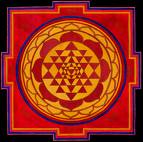As most of you know, when you have a consultation with me I do a lot of muttering to myself. One thing you’ve probably heard me mutter is the word dasa (pronounced DAsha). It’s time to explain this—and to explain I’ll have to go back a few steps.
One of the biggest differences between western astrology and Jyotish, the astrology of India, is that current Western astrology offers no quick way to get an overview of the entire life. In both systems you will start with a basic birth chart, but in western astrology, you pretty much have to trace every year of life to see what will happen in that year.
Jyotish offers something completely different. Each of the traditional planets is “in charge” of a specific set of years in a person’s life. This is the dasa sequence. I often refer to this as a “planetary period”. Where you start in this sequence depends on the exact placement of your Moon at birth. Even people born on the same day can be years apart in their dasa sequence. So at any given point in your life, you are running the dasa of a particular planet—and subdasas of other planets.
The planet that is your current dasa ruler will express its potential during this particular part of your life. Dasas range in length from six to twenty years, so we can trace the main activities of great periods of life by watching the dasa rulers. By combining them with the sub-periods and the movement of transiting planets, we can actually pinpoint when important events are likely to happen in a person’s life.
In Jyotish, there are actually at least sixty different dasa systems. I use three. By checking the three periods, and seeing that the same kind of event is likely in all three at the same time, we can be quite sure an event of that particular type will occur at that time. Sometimes an event will show in only one. Then we can guess that you will be thinking about that kind of thing—say marriage, or having children, or changing careers, but depending on the strength of the one indicator, you may not actually experience it.
Another advantage Jyotish offers is a way to figure out which of the many significators of a house or planet is the one that will get activated. Jupiter, for example, is the planet of children, of travel, of spiritual knowledge… So if Jupiter is active, which of those things will happen? Jyotish also offers us a series of charts, exploded out from the birth chart. Each of these additional charts covers a different area of life. So we can examine the Jupiter dasa, for instance, from the chart of children, the chart of spiritual knowledge, the chart of career and education… This is one of the reasons Jyotish is such a powerful predictive tool.
On the other hand, I’m not about to give up the profound insights also offered by our more familiar Western astrology!


